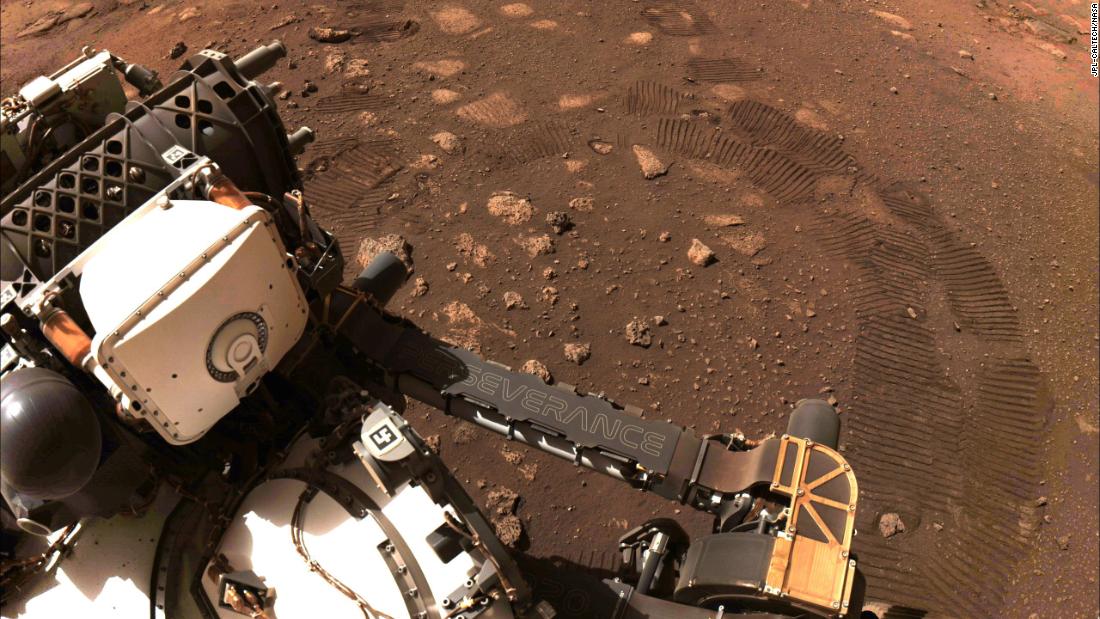
The rover successfully converted some of the abundant carbon dioxide on Mars to oxygen on Tuesday as the first test of its MOXIE instrument. The name MOXIE is the abbreviation for Mars Oxygen In-Situ Resource Utilization Experiment.
After heating for about two hours, MOXIE produced 5.4 grams of oxygen. This is enough to keep an astronaut for about 10 minutes.
The instrument is the size of a toaster and is a demonstration of technology installed in the rover. If this experiment is successful, it could help human exploration of Mars in the future.
The thin Martian atmosphere has 96% carbon dioxide, which doesn’t help humans breathing oxygen much.
Something that can convert this carbon dioxide into oxygen efficiently it could help in more ways than one. Larger and better versions of something like MOXIE in the future could convert and store the oxygen needed for rocket fuel, as well as supply life support systems with breathable air.
The instrument works by dividing carbon dioxide molecules, which include one carbon atom and two oxygen atoms. It separates oxygen molecules and emits carbon monoxide as a waste product.
Heat-tolerant materials, such as a gold coating and airgel, were used to make the instrument, as this conversion process requires temperatures that reach 1,470 degrees Fahrenheit. These materials prevent heat from dissipating and damaging any aspect of the rover.
“This is a critical first step in converting carbon dioxide into oxygen on Mars,” Jim Reuter, associate director of NASA’s Space Technology Mission Directorate, said in a statement.
“MOXIE has more work to do, but the results of this technology demonstration are full of promise as we move toward our goal of one day seeing humans on Mars. Oxygen is not just what we breathe. The propellant of rockets depend on oxygen and future explorers will depend on propellant production on Mars to make the trip home. “
To launch four astronauts from the surface of Mars, about 15,000 pounds of rocket fuel and 55,000 kilos of oxygen would be needed. Living on the surface of Mars, space explorers would consume much less.
“Astronauts who spend a year on the surface may use a metric ton between them,” said Michael Hecht, MOXIE principal investigator at the Haystack Observatory at the Massachusetts Institute of Technology.
Transporting so much oxygen from Earth to Mars would be incredibly difficult and expensive and would mean less space on the spacecraft for other needs.
However, an oxygen converter weighing approximately 1 ton (a large and powerful future generation of MOXIE) could produce the necessary oxygen.
For future testing, MOXIE will likely generate up to 10 grams of oxygen per hour. The instrument will test about nine more times over the next two years and the research team will use the data to design future generations of MOXIE.
Like the goals set the Ingenuity helicopter, which is also a technology demonstration, is aimed at MOXIE to exceed the limits of the instrument.
During the first phase, the team will evaluate the operation of the instrument. A second phase will test MOXIE under different conditions, such as time of day or variable seasons. And during the third and final phase, “we’ll push the wrapper,” testing new modes of operation or introducing “new wrinkles, such as a race where we compare operations at three or more different temperatures,” Hecht said.
Technology like MOXIE could help future astronauts essentially live off the earth and use the resources of their environment.
“MOXIE is not just the first instrument to produce oxygen in another world,” Trudy Kortes, director of technology demonstrations at NASA’s Space Technology Mission Directorate, said in a statement.
“It’s taking the regolith, the substance you find on the ground, and putting it through a processing plant, it turns it into a big structure or it takes in carbon dioxide (most of the atmosphere) and it turns it into This process allows us to turn these abundant materials into useful things: propellant, breathable air or, combined with hydrogen, water “.
The positive results of this first test bring Mars missions one step closer to landing humans on the red planet.